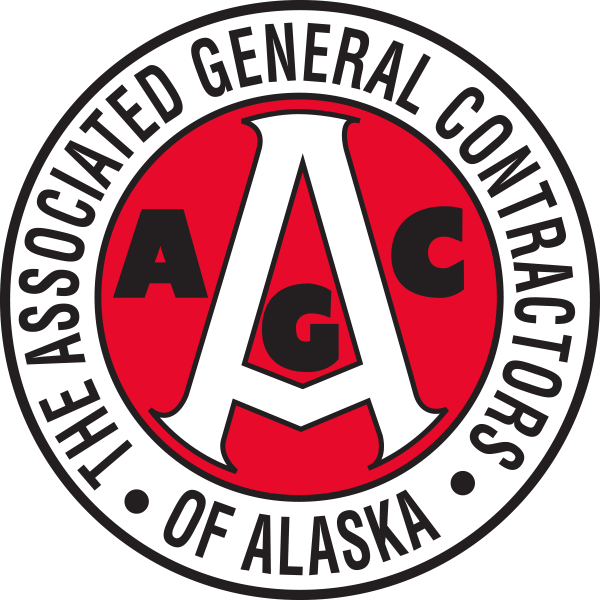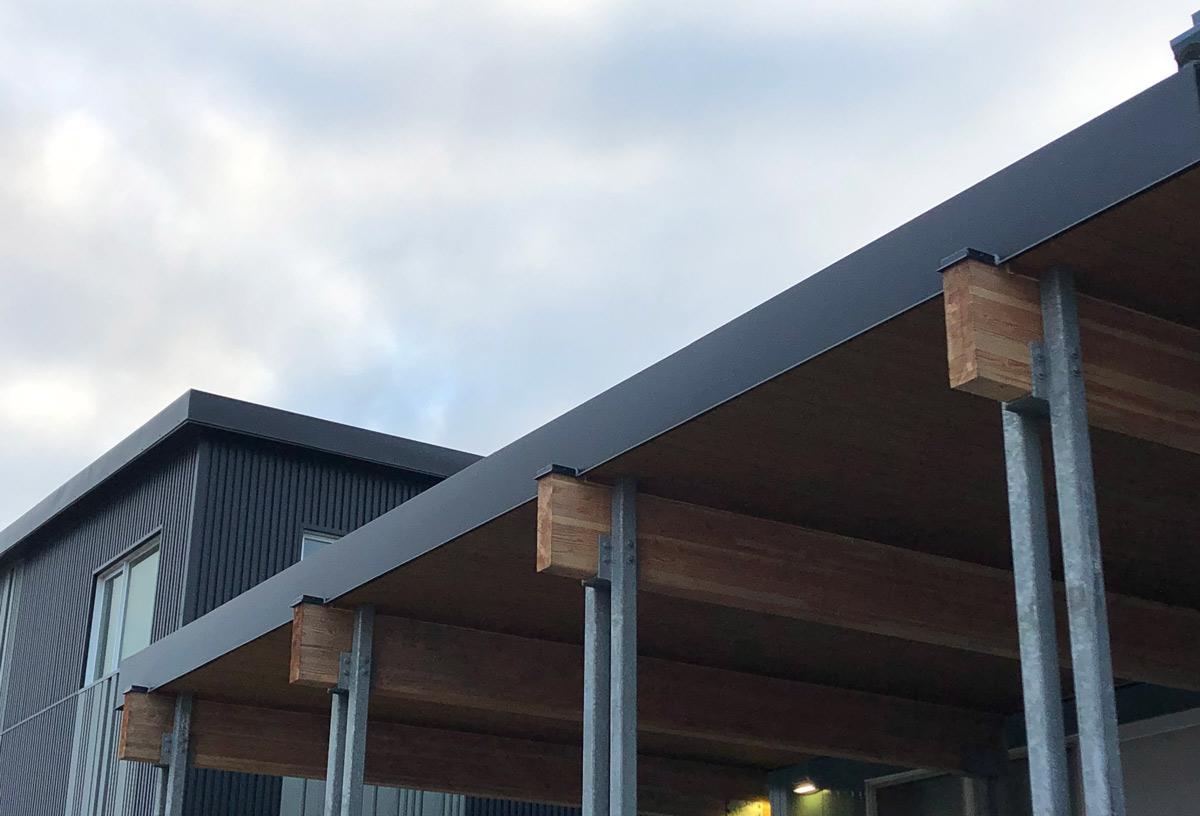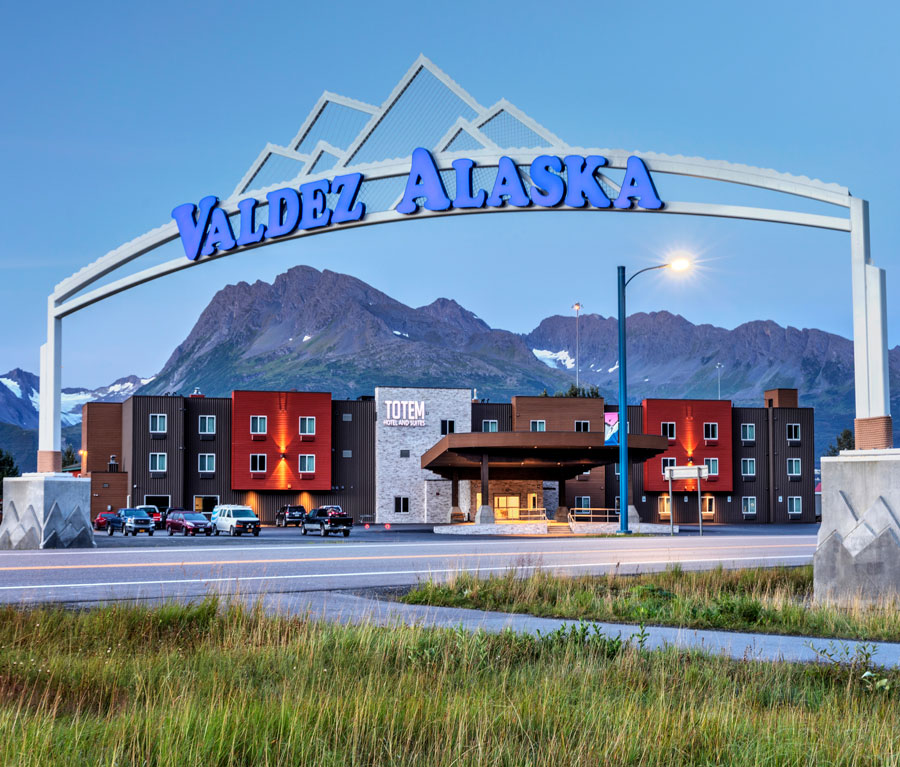
rom start to finish and all points in between, ASRC Construction’s work and stature foster abundant personal and professional satisfaction.
“There are not many strangers in our company,” says Director of Operations Paul Kari. “A lot of ASRC shareholders are also employees. In other words, our owners also work for us, and they have real buy-in. They’re really participating in our success.”
ASRC Construction is one of Arctic Slope Regional Corporation’s, or ASRC’s, many subsidiaries. The parent company originated shortly after the Alaska Native Claims Settlement Act of 1971. ASRC is Iñupiat-based and is the largest Alaska-owned and -operated business in the state.
It’s also Alaska’s largest private employer, with more than 13,000 employees.
“We all take great pride in our company,” says Tamara Young, general manager of the ASRC SKW Eskimos division, or ASKW, specializing in building and civil/infrastructure markets. “Especially in rural Alaska and remote parts of the state. We’re always helping growth in those areas.”
The family of companies under the ASRC Construction banner completed almost $3 billion in successful construction work in the past two decades.
Along with ASKW’s remote building and infrastructure capabilities, the companies concentrate on:
- civil construction (ASRC Civil Construction)
- paving and utilities for federal, state, and local governments (ASRC Earthworks)
- vertical and industrial government contracting (ASRC Builders)
- modular construction (Builders Choice, Modular Division)
- building materials and truss fabrication (Builders Choice, Building Materials Division)
The combined subsidiaries also offer support services, including safety, human resources, logistics, and fleet management. They do so by relying on each subsidiary’s unique capabilities.
“We’re a large entity and always able to stand behind what we’re doing,” says Kari. “There’s a lot of upside in not having to limit the scope of our work whether it’s a $10,000 project or $100 million.”
And Alaskans trust the company.
“Extensive experience is behind ASRC, especially working on rural Alaska projects in very challenging sites,” says Kathy Christy, the Northwest Arctic Borough School District’s Capital Management supervisor. “There’s never a reason not to expect a job done right.”


Above: ASRC Construction began renovation of the Shishmaref School in 2019. The village is located on Sarichef Island in the Chukchi Sea, 601 miles northwest of Anchorage.
Left: ASRC Construction’s modular group completed work on Valdez’s Totem Inn in early 2018. The group takes expensive, constructional structures and turns them into cost-effective modular solutions.
Below: The Hilcorp Tyonek Platform project in Cook Inlet is another example of ASRC Construction’s efficient and safe modular services.
Photos courtesy of ASRC Construction

ASRC says it’s committed to honesty, integrity, transparency, and respect. The company has stayed true to those values since it first helped assemble a majority of the Iñupiat villages in the northern portion of the country’s largest state. Although the company works primarily in Alaska, it has occasionally ventured to the Lower 48.
“Historically, we’ve had a footprint outside the state, but that’s changed over the last decade,” says Kari. “Outside of Alaska, our construction is probably south of 5 percent of all we do. We’re definitely an Alaska-focused construction company. As you can imagine, managing projects here is variable enough as it is, but we’re packed to the gills as we entered 2021.”
A few examples of current ASRC projects include the missile defense agency’s long-range discrimination radar infrastructure at Clear Air Force Station and other military work in the Interior, ongoing civil maintenance, such as paving, on Joint Base Elmendorf-Richardson, Alaska Department of Transportation & Public Facilities’ Barrow Airport maintenance and operations facility, and school projects in Aniak, Kivalina, Shishmaref, and Tuntutuliak.
“As a government contractor, we take pride in delivering projects that benefit our state and a variety of military installations,” says Robert Champion, ASRC Construction’s president and CEO.
Eighty-one miles northwest of Kotzebue in Kivalina, ASRC helped perform quite a feat to prepare for the construction of a new school. Starting in late 2018, the team worked with the Alaska Department of Transportation on an access road for the island community. The work included eight miles of road, the development of a working quarry to supply more than 500,000 cubic yards of needed materials, and the construction of a single-span steel bridge spanning 188 feet.
“The whole thing, the work, the effort was quite amazing,” says Christy.
In the Yukon-Kuskokwim Delta village of Tuntutuliak, ASRC has been working on a $35-million project to renovate and build an addition to Lewis Angapak Memorial School.
The remote village of 400 Alaskans sits nearly 44 miles southwest of Bethel and 434 air miles from Anchorage. Because of the location, planning for this kind of task takes tremendous time and can be more important than the boots-on-the-ground building. The logistical challenges are demanding.
“You can’t send all the materials at once, if some of them won’t be installed for two years,” says Young. “Yes, you know when a barge will arrive, but where the job is located and, it being a boardwalk community, how will items be packaged and moved?”
“That’s the front end. Then something is going to come up. It takes the right superintendent, the right crew and the right subcontractors,” continues Young. “Things may get stressful, but we’ve done our thing for a long time and done it well.”